0 Volumes
No volumes are associated with this topic
Bridges
New topic 2018-03-02 16:37:09 description
Benjamin Franklin Bridge and Delaware River Port Authority.
In 1919, the Delaware River Bridge Joint Commission was created to construct a bridge across the Delaware River connecting New Jersey and Philadelphia. The Delaware River Bridge was completed on July 1, 1926, and was renamed the Benjamin Franklin Bridge in 1956. From the time of its completion in 1926 until 1929, the Delaware River Bridge was the longest suspension bridge in the world.
The original design called for six vehicular lanes, two streetcar lanes, and provisions for heavy rail in each direction outboard of the bridge's stiffening trusses. The design also specified two pedestrian walks located above the main deck level.
Included in the project design were streetcar stations with elevators integrated into the bridge anchorages. These stations, along with the streetcars, were never commissioned into service on the bridge due to the increased popularity of the automobile along with the limited amount of pedestrian traffic.
Initially, the bridge conveyed 35,000 vehicles a day, with a toll of 25 cents to cross the Delaware River. During its first three months in operation, bridge use increased to two million vehicles, twice the amount forecasted for that period. With traffic volumes continuing to grow through the late 1920s, officials suggested adding two additional traffic lanes in each direction by utilizing the then unused outboard structures. The proposal, which would have increased vehicular capacity to ten lanes, never progressed beyond the discussion stage.
The provisions for heavy rail were put into place with the expectation that either New Jersey or Pennsylvania would extend their respective system across the bridge. When this did not occur, the Delaware River Bridge Joint Commission decided to construct its own high-speed transit system called the "Bridge Line" connecting Camden and Philadelphia.
On July 17, 1951, President Harry S. Truman signed a bill that created the current Delaware River Port Authority, which succeeded the Delaware River Joint Commission. In September 1967, the Delaware River Port Authority established the Port Authority Transit Corporation to operate the PATCO Speedline, which began service on February 15, 1969, replacing the Bridge Lineas the rapid rail service between Southern New Jersey and Center City Philadelphia.
Image provided by The Delaware River Port Authority, courtesy of Michael Howard.
REFERENCES
| The Benjamin Franklin Bridge (Images of America) Michael Howard,‎ Maureen Howard ISBN-13: 978-0738562582 | Amazon |
Secret Service Visits Burlington Bristol Bridge
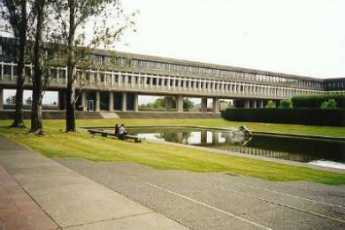
|
| Secret Service Head Quarters |
A few years ago, the buzz around local Secret Service headquarters was that some very good, even exceptionally good, fake hundred dollar bills were in circulation in our neighborhood. The official stance of The Service is that all counterfeits are of very poor quality, easily detected and no threat to the conduct of trade. Unfortunately, some counterfeits are of very good quality, not easily detected, and when that happens, The Service is made to feel a strong sense of urgency by its employers. These particular hundred dollar fakes were of very good quality.
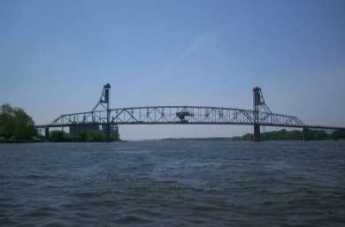
|
| Burlington Bristol Bridge |
One evening, a call came in. Don't ask me who I am, don't ask me why I am calling. But I can tell you that a very large bag of hundred dollar wallpaper has just been tossed over the side of the Burlington Bristol Bridge, near the Southside on the Jersey end. Goodbye.
Very soon indeed, boats, divers, searchlights, ropes, and hooks discovered that it was true. A pillowcase stuffed with hundred dollar wallpaper of the highest quality was pulled out of the river. By the time the swag was located and spread out for inspection, it was clear that several million dollars were represented, but they were soaked through and through. Most of the jubilant crew were sent home at midnight, and two officers were detailed to count the money and turn it in by 7 AM. The strict rule about these things is that all of the money confiscated in a "raid" was to be counted to the last penny before it could be turned over to the day shift and the last officers could go home to bed. After an hour or so, it was clear that counting millions of dollars of soggy wet sticky paper was just not possible by the deadline. So, partly exhilarated by the successful treasure hunt, and partly exhausted by lack of sleep, the counters began to struggle with their problem. One of them had the idea: there was an all-night laundromat in Pennsauken. Why not put the bills in the automatic drier, so they could be more easily handled and counted? Away we go.
At four in the morning, there aren't very many people in a public laundromat, but there was one. A little old lady was doing her wash in the first machine by the door. It was a long narrow place, and the two officers took their bag of soggy paper past the old lady, and down to the very last drying machine on the end. Stuffed the bills into the machine, slammed the door, and turned it on. Most people don't know what happens when you put counterfeit money in a drier, but what happens is they swell up and sort of explode with a terribly loud noise. The machine becomes unbalanced, and the vibration makes even more noise. The little old lady came to the back of the laundromat to see what was going on.
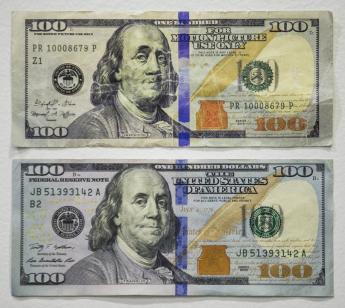
|
| Counterfeit 100's |
As soon as she got close, she could see hundred dollar bills plastered against the window, and that was all she stopped to see. She headed for the pay telephone near the front of the door. The secret Servicemen followed quickly with waving of hands and earnest explanations, but within minutes there were sirens and flashing lights on the roof of the Pennsauken Police car. Out came wallets and badges, everyone shouting at once, and then everything calmed down as the bewildered local cop was made to understand the huge social distance between a municipal night patrolman and Officers of the U.S. Secret Service. Now, he quickly became a participant in the great adventure and was delegated the job of finding something to do with armloads of (newly dried) counterfeit hundred dollar bills. He had an idea: the local supermarket was also open all night, and they carried plastic garbage bags for sale. Just the thing. But who was going to pay the supermarket for the bags? Immediately, everyone was thinking the same thing.
Fortunately for law and order, the one who first suggested the the obvious idea of passing one the counterfeits was the little old lady. At that, everyone came to his senses. Wouldn't do at all, quite unthinkable. The local cop was sent off for the bags, relying on his ability to persuade the supermarket clerk. And, yes, they did get the money all counted by 7 A.M.
Urban Bridges

|
| Reverend Mary E. Laney |
The Reverend Mary E. Laney recently told the Right Angle Club about her experiences in an Episcopal mission church, along with the history behind this innovation, and the establishment of a 501(c)(3) organization to help the idea on a national level. That may mean no more to readers of this site than at first it probably did to the Right Angle Club, before Mary Laney made it all come alive. It was quite moving.
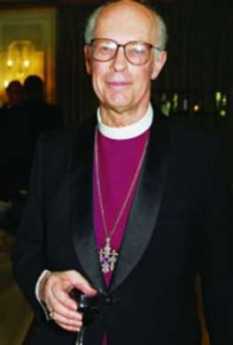
|
| Bishop Alan Bartlett |
During the 1980's she asked Bishop Alan Bartlett, at that time the Bishop of Eastern Pennsylvania for the Episcopal Church, if she might be assigned to an urban mission. As ethnic and religious population migrated around the Philadelphia landscape, quite a few Episcopal churches have been stranded in economically depressed neighborhoods, unable to afford a full-time pastor. The concept of a mission church was developed as a designation for churches that had dwindled to the point where only a handful of parishioners were left and were assigned to a category in which the Bishop would appoint a part-time Vicar to be in charge of what then needed financial support from the main church. Although in a sense Bishop White started the idea two hundred years earlier, there were no mission churches in Philadelphia in colonial times, but there are now over fifty of them, a quarter of the Episcopal churches in the region. Reverend Lancey was assigned to St. Gabriel's at the corner of Front Street and Roosevelt Boulevard, and stayed there fifteen years. She is now with St. Christopher's in Gladwynne.
The initial concept was to identify eight lead mission churches, build them up to be self-sustaining, and then replace them with eight new ones. With all good will and hard work in the world, this concept failed, largely because the social conditions of the poor at that time also depressed their educational level, and had instilled in them a culture of constant failure. In one telling episode, the parishioners said there was no hot water in the church. As a matter of fact, the pilot light of the hot water heater had gone out, and the parish was so sunken in the mindset of failure and despair they had not even looked into it. Mary Laney decided something had to be done to change the model.
What seems to have worked was the creation of a 501(c)(3) organization called Urban Bridges. The original idea behind this organization was that since the Constitutional separation of church and state precluded government grants to church no matter how struggling, but perhaps a tax exemption would make it possible for private donations to accomplish what was needed. There was, in addition, the sad experience that whenever the constitution barriers had somehow been overcome by circumvention, the many layers of bureaucracy usually consumed the money. It had proved disheartening to see four or five years go by after a government grant, with not a cent getting to the programs and all consumed by consultants, advisers and supervisors.
Meanwhile, the poor parishioners continued to base their hopes on this sort of relief, while neglecting things which might be more effective.
The Urban Bridges program evolved from a primarily fund-raising organization into a system of partnerships between prosperous suburban churches and the struggling urban missions. The suburban churches proved to be inspired with a wish to help but frustrated by a lack of means to do anything effective. It thus evolved that the suburban Episcopal churches supplied what was really most needed: practical examples of leadership on a local level, combined with visible evidence of successful effort. Literacy courses, drum and bugle instruction, computer tutoring and a variety of other spontaneous activities led to the example of leadership, and in the long run, was a far more effective fund-raising tool than printed appeals and button-holing. Even in the case of crime, it was the leadership that made the difference.
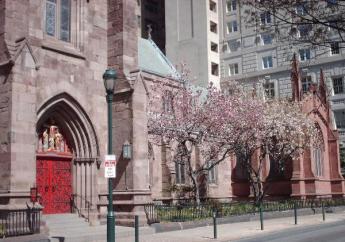
|
| St. Christopher's Church |
The story was told of a drug dealer in the neighborhood who dominated the streets with dogs and blocked access to schools unless the children agreed to sell drugs for him. Local police had proved unhelpful, and hopelessness was rampant. What would prosperous suburbanites do in such a situation? Obviously, suburbanites would not stand for such a situation and called in the Federal Drug Enforcement Agency. The crook was promptly deprived of his dogs and now resides in jail. That may not be wholly in the spirit of peaceful reasoning, but it's the American Way, all right. This was what seemed to be missing in the culture of poverty. It's the determination that whatever the cost, intolerable things will not be tolerated, combined with absolute faith that the system does provide ways to be effective without becoming either lawless or wards of the state. This is America, right?
3 Blogs
Benjamin Franklin Bridge and Delaware River Port Authority.
The Delaware River Port Authority, Senior Engineer Michael Howard.
Secret Service Visits Burlington Bristol Bridge
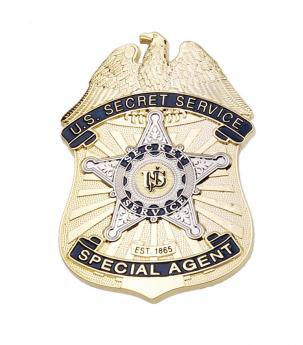 It's surprising what sometimes goes on, around here.
It's surprising what sometimes goes on, around here.
Urban Bridges
 The Episcopal Church has found a practical way for its prosperous suburban branches to form partnerships with struggling urban parishes.
The Episcopal Church has found a practical way for its prosperous suburban branches to form partnerships with struggling urban parishes.